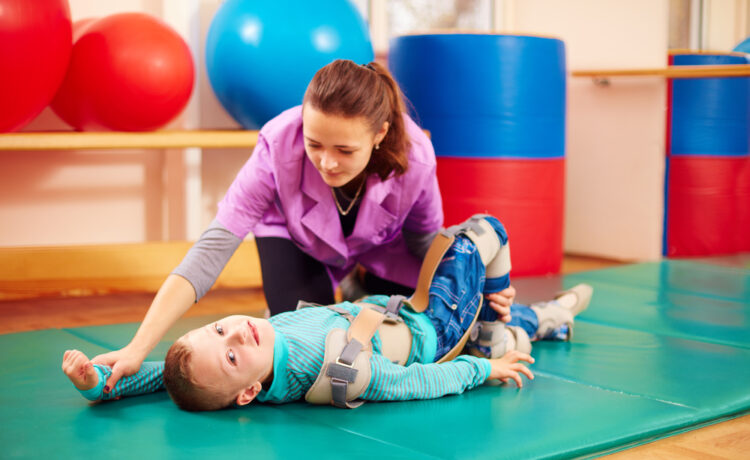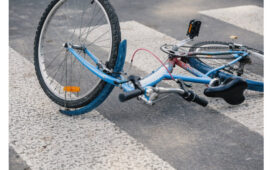Defining Cerebral Palsy
Cerebral Palsy (CP) is a neurological disorder that affects movement, muscle tone, and posture. It is caused by damage to the developing brain, often before birth. CP is not a single condition but rather a group of disorders with varying degrees of severity. The nature of the impairment depends on the specific areas of the brain that are affected.
The symptoms of CP can range from mild to severe and may include:
- Difficulty with fine motor tasks, such as writing or using scissors
- Challenges with maintaining balance and walking
- Involuntary movements or muscle stiffness
- Difficulty with speech and communication
It is important to note that CP is a non-progressive disorder, meaning the brain damage does not worsen over time. However, the symptoms can change as a person grows and develops. Early intervention and ongoing therapy play a crucial role in managing the condition and improving quality of life.
Common Physical and Cognitive Challenges
Individuals with cerebral palsy face a spectrum of physical and cognitive challenges that can vary greatly in severity and impact. These challenges are often intertwined, affecting multiple aspects of daily life.
- Motor Function Difficulties: The most prevalent physical challenge is impaired motor function, which can manifest as spasticity, muscle weakness, or involuntary movements. This can lead to difficulties with gross motor skills such as walking or running, as well as fine motor skills like writing or buttoning a shirt.
- Cognitive Impairments: While not all individuals with cerebral palsy experience cognitive impairments, those who do may struggle with attention, memory, and problem-solving skills. These cognitive challenges can affect learning and communication, necessitating tailored educational approaches.
- Sensory Processing Issues: Sensory processing difficulties are common, with individuals potentially experiencing hypersensitivity or hyposensitivity to stimuli. This can impact their ability to interact with their environment effectively.
- Speech and Language Delays: Many with cerebral palsy have speech and language delays, which can hinder communication. Speech therapy is often a critical component of their treatment plan.
Early intervention is crucial for managing cerebral palsy. A combination of physical therapy, occupational therapy, medications, and other treatments can significantly improve outcomes for children with disabilities. Careful assessment and a personalized approach to therapy can empower individuals with cerebral palsy to overcome some of their challenges and lead more independent lives.
The Impact on Daily Life and Independence
Individuals with cerebral palsy face a unique set of challenges that can significantly affect their daily life and independence. The degree of impact varies widely, depending on the severity of the condition and the areas of the body that are affected.
- Motor skill difficulties can make routine tasks such as dressing, eating, and personal hygiene time-consuming and physically demanding.
- Mobility issues often require the use of assistive devices like walkers or wheelchairs, which can limit access to certain environments and activities.
- Communication barriers can arise for those with speech impairments, making social interactions and expressing needs more challenging.
The pursuit of education, employment, and social engagement can be hindered, not only by physical limitations but also by societal barriers and a lack of understanding. However, with the right support and assistive technologies, many individuals with cerebral palsy can lead fulfilling and independent lives. It’s important to recognize the role of advocacy in ensuring that the necessary resources and accommodations are available to support these individuals in overcoming the challenges they face.
The Evolution of Assistive Technologies for Cerebral Palsy
Historical Overview of Assistive Devices
The journey of assistive technology for individuals with cerebral palsy has been marked by significant milestones. Initially, the focus was on basic mechanical aids designed to provide support and enhance mobility. These early devices were often cumbersome and not tailored to the individual’s specific needs.
As understanding of cerebral palsy grew, so did the sophistication of assistive devices. The introduction of lightweight materials and adjustable components allowed for more personalized and comfortable solutions. This era saw the development of specialized wheelchairs, walking aids, and standing frames, each contributing to greater independence for users.
The latter part of the 20th century brought about a technological revolution that transformed assistive devices. Electronic communication aids, for instance, provided a voice for those with speech difficulties, while computer adaptations opened up new educational and vocational opportunities. The evolution of assistive technology has been a testament to the resilience and ingenuity of the human spirit, continually pushing the boundaries of what is possible for individuals with cerebral palsy.
Technological Advances in Mobility Aids
The landscape of mobility aids for individuals with cerebral palsy has been transformed by technological innovation. Advanced materials and design have led to the creation of lighter, more durable wheelchairs, enhancing maneuverability and comfort. Customization options now allow for wheelchairs to be tailored to the specific needs of the user, considering factors such as posture support and ease of propulsion.
Robotic exoskeletons represent a groundbreaking development in assistive technology. These wearable devices support movement and can even enable some individuals to walk for the first time. The integration of sensors and software allows for adaptive control, adjusting to the user’s movements and providing assistance as needed.
- Smart crutches and walkers have been equipped with sensors that provide feedback to users, helping to improve gait and reduce the risk of falls.
- Innovations in prosthetics have also seen the incorporation of microprocessors, enabling more natural and efficient movement.
These advancements not only improve mobility but also open doors to greater participation in a range of activities, fostering independence and enhancing quality of life for those with cerebral palsy.
Communication Devices and Software Innovations
The landscape of assistive technology for individuals with cerebral palsy has been revolutionized by the advent of innovative communication devices and software. These tools are designed to overcome the barriers faced by those with speech and language difficulties, enabling them to express themselves more effectively and engage in conversations with ease.
Key innovations include:
- Speech-generating devices (SGDs), which allow users to select symbols, words, or phrases to be spoken aloud by the device, thus facilitating communication for those with limited speech abilities.
- Eye-tracking technology, which enables individuals to control a computer or speech device using only their eye movements, providing a voice to those who are unable to speak or use their hands.
- Customizable software applications, tailored to the user’s specific communication needs, which can be installed on various devices such as tablets or smartphones, making communication aids more accessible and portable.
These advancements not only foster greater independence but also enhance social interaction and community participation. Training and support are crucial for users to fully benefit from these technologies, as they often require practice and adaptation to integrate effectively into the user’s daily life.
Assistive Technology in Action: Case Studies and Success Stories
Personal Mobility Achievements
The realm of assistive technology has witnessed remarkable strides in enhancing personal mobility for individuals with cerebral palsy. These advancements have not only increased independence but have also improved the quality of life for many.
- Wheelchairs and Walkers: Customized wheelchairs have become more adaptive, catering to the specific needs of users. Electric wheelchairs now feature improved controls for better maneuverability. Walkers, too, have been redesigned with lightweight materials and supportive features that encourage self-initiated movement.
- Gait Trainers and Standing Frames: Gait trainers assist in developing walking patterns, while standing frames support weight-bearing activities. Both devices play a crucial role in promoting physical health and reducing the risk of secondary complications.
- Prosthetics and Orthotics: The use of advanced materials and 3D printing has led to the creation of more effective and comfortable prosthetics and orthotics. These bespoke solutions help in aligning limbs and improving posture, which is vital for mobility.
The impact of these technologies is profound, as they provide a sense of autonomy and enable individuals with cerebral palsy to navigate their environments with greater ease. Success stories abound, with users achieving milestones in personal mobility that were once deemed unattainable.
Enhanced Communication Abilities
Individuals with cerebral palsy often face significant challenges in expressing themselves due to difficulties with speech and motor control. Assistive technologies have revolutionized the way these individuals can communicate, offering them a voice and the ability to interact more effectively with the world around them.
- Speech Generating Devices (SGDs): These devices enable users to select words or phrases on a screen, which are then spoken aloud by the device. SGDs can be customized to include commonly used phrases and personalized vocabulary, making communication more efficient and personal.
- Eye-tracking technology: For those who cannot use their hands to operate SGDs, eye-tracking technology allows users to select words on a screen by simply looking at them. This technology has opened up new avenues for interaction, especially for individuals with severe motor limitations.
- Communication apps: There are numerous apps designed to aid communication, ranging from simple symbol-based systems to sophisticated software that predicts words and phrases based on user history. These apps can be installed on tablets or smartphones, making them highly portable and accessible.
The integration of these technologies into daily life has not only enhanced the ability to communicate but has also fostered greater self-esteem and social participation. As users gain proficiency, they often experience a profound sense of empowerment, knowing that their thoughts and needs can be understood and respected by others.
Educational and Vocational Empowerment
Assistive technologies have revolutionized the educational and vocational opportunities for individuals with cerebral palsy. These tools provide the means to overcome barriers that might otherwise limit their participation in academic and work environments.
- Adaptive Keyboards and Mice: Customizable input devices allow for easier interaction with computers, essential for both learning and professional tasks.
- Speech-to-Text Software: This technology enables students and employees to dictate their thoughts, thus bypassing difficulties with manual writing.
- Assistive Learning Applications: Specialized software can assist with reading, organization, and time management, which are crucial skills in both school and the workplace.
Success stories abound, with many individuals achieving degrees and thriving in careers that were once deemed inaccessible. Schools and employers are increasingly recognizing the value of inclusive practices, facilitated by assistive devices, that allow for the full participation of those with cerebral palsy.
Navigating the World of Assistive Devices: A Guide for Caregivers and Users
Assessment and Selection of Appropriate Technologies
The journey to empower individuals with cerebral palsy through assistive technology begins with a thorough assessment. This process is crucial to identify the unique needs and challenges faced by each person. A multidisciplinary team, often including therapists, educators, and medical professionals, collaborates to evaluate the individual’s physical capabilities, cognitive functions, and daily activities.
Key considerations during the assessment include:
- The severity and type of cerebral palsy
- The individual’s communication skills and needs
- Current and potential mobility levels
- The person’s goals for education, work, and personal life
Once the assessment is complete, the selection of technologies can be tailored to enhance the user’s independence. This involves matching the right tools with the individual’s specific requirements, ensuring that the devices are not only functional but also user-friendly and adaptable to various environments. The selection process is dynamic, often requiring trials with different devices to find the optimal fit. It is also important to consider the potential for growth and change, as the needs of individuals with cerebral palsy may evolve over time.
Training and Adaptation for Maximum Benefit
Once an assistive device has been selected, the journey towards empowerment truly begins with effective training and adaptation. It is crucial for users to receive comprehensive instruction on how to use the technology to its fullest potential. This often involves working with occupational therapists, physiotherapists, or speech-language pathologists who specialize in assistive technology.
The adaptation process is equally important and can be broken down into several key steps:
- Personalization: Adjusting the device to fit the unique needs and preferences of the user.
- Skill Development: Learning and practicing the skills necessary to operate the device efficiently.
- Integration: Incorporating the device into daily routines to enhance independence.
- Ongoing Support: Accessing continuous support for device maintenance and updates.
For caregivers and users alike, understanding that this process is iterative and may require patience is essential. Success with assistive technology is not just about the device itself, but also about the user’s ability to integrate it into their life, which can significantly improve their autonomy and quality of life.
Financial Considerations and Access to Resources
The acquisition of assistive technologies for individuals with cerebral palsy often involves significant financial investment. As these devices and software can be quite costly, understanding the financial landscape is crucial for caregivers and users. Funding can come from a variety of sources, including insurance coverage, government programs, grants, and private charities.
- Insurance Coverage: It’s essential to review the individual’s insurance policy to determine what types of assistive devices are covered and to what extent. Pre-authorization may be required for certain equipment.
- Government Programs: Many countries offer government-funded programs that provide financial assistance for purchasing assistive technology. Eligibility criteria and the application process should be thoroughly researched.
- Grants and Scholarships: Various organizations offer grants and scholarships specifically for assistive technology. These can be a valuable resource for those who do not qualify for other forms of financial aid.
- Private Charities: Some charities focus on helping individuals with disabilities and may offer funding or equipment donations.
Navigating these financial avenues requires diligence and often the assistance of professionals who specialize in disability resources. It’s also important to consider the long-term costs, such as maintenance, upgrades, and eventual replacement of assistive devices. By exploring all available resources, individuals with cerebral palsy and their caregivers can make informed decisions that enable access to necessary assistive technologies without incurring insurmountable expenses. Financial support for birth injuries may also be worth looking into if the injury was caused due to medical negligence.
The Future of Assistive Technology for Cerebral Palsy
Emerging Trends and Innovations
The landscape of assistive technology for individuals with cerebral palsy is rapidly evolving, with new trends and innovations continually emerging. These advancements promise to further enhance independence and quality of life for those affected by the condition.
- Wearable Technology: The integration of sensors and smart fabrics into clothing and accessories is providing real-time monitoring of movement and posture, enabling more personalized therapeutic interventions.
- Brain-Computer Interfaces (BCI): BCIs are breaking ground by allowing users to control devices and communicate through brain signals, bypassing physical limitations.
- 3D Printing: Customizable and cost-effective assistive devices are now possible thanks to 3D printing, which allows for the creation of tailored solutions that fit the unique needs of each individual.
As these technologies develop, they bring the promise of greater autonomy for those with cerebral palsy. However, it is crucial to ensure that information about these innovations is accessible. A comprehensive website provides information on birth injuries and cerebral palsy, including causes, types, treatment, legal resources, and support, and even offers free case reviews for legal action related to birth injuries.
The Role of Artificial Intelligence and Robotics
The integration of artificial intelligence (AI) and robotics into assistive technologies marks a significant leap forward in empowering individuals with cerebral palsy. AI-driven devices can adapt to the user’s unique needs, providing personalized support that evolves over time. For instance, AI can analyze movement patterns to optimize the function of motorized wheelchairs, enhancing mobility and independence.
Robotics, on the other hand, offers tangible assistance through robotic limbs and exoskeletons. These devices not only assist in movement but also help in performing daily tasks that would otherwise be challenging. The following points highlight the transformative impact of AI and robotics in assistive technology:
- Personalized Learning Algorithms: AI systems can learn from the user’s behavior, improving the efficiency of assistive devices.
- Advanced Motor Control: Robotic devices provide precise movement assistance, which is crucial for individuals with motor impairments.
- Interactive Rehabilitation: Robotics can be used in therapeutic settings, offering engaging ways to improve motor skills and strength.
As these technologies continue to evolve, they promise to offer even more sophisticated solutions that can significantly enhance the quality of life for those with cerebral palsy.
Advocacy for Accessible and Affordable Solutions
The quest for accessible and affordable assistive technologies in cerebral palsy care is a collective effort that involves patients, caregivers, healthcare professionals, and policymakers. Advocacy plays a crucial role in this endeavor, aiming to bridge the gap between the availability of advanced solutions and the individuals who need them most.
Key advocacy efforts include:
- Raising awareness about the importance of assistive technology in improving the quality of life for those with cerebral palsy.
- Lobbying for legislation that mandates insurance coverage and funding for essential assistive devices.
- Partnering with technology developers to prioritize user-centric design and cost-effective production.
- Establishing community support networks to share resources, knowledge, and best practices.
Through persistent advocacy, the goal is to create an environment where cutting-edge assistive technologies are not only developed but are also widely accessible and financially attainable for all individuals with cerebral palsy. This ensures that every person has the opportunity to lead a more independent and empowered life.











